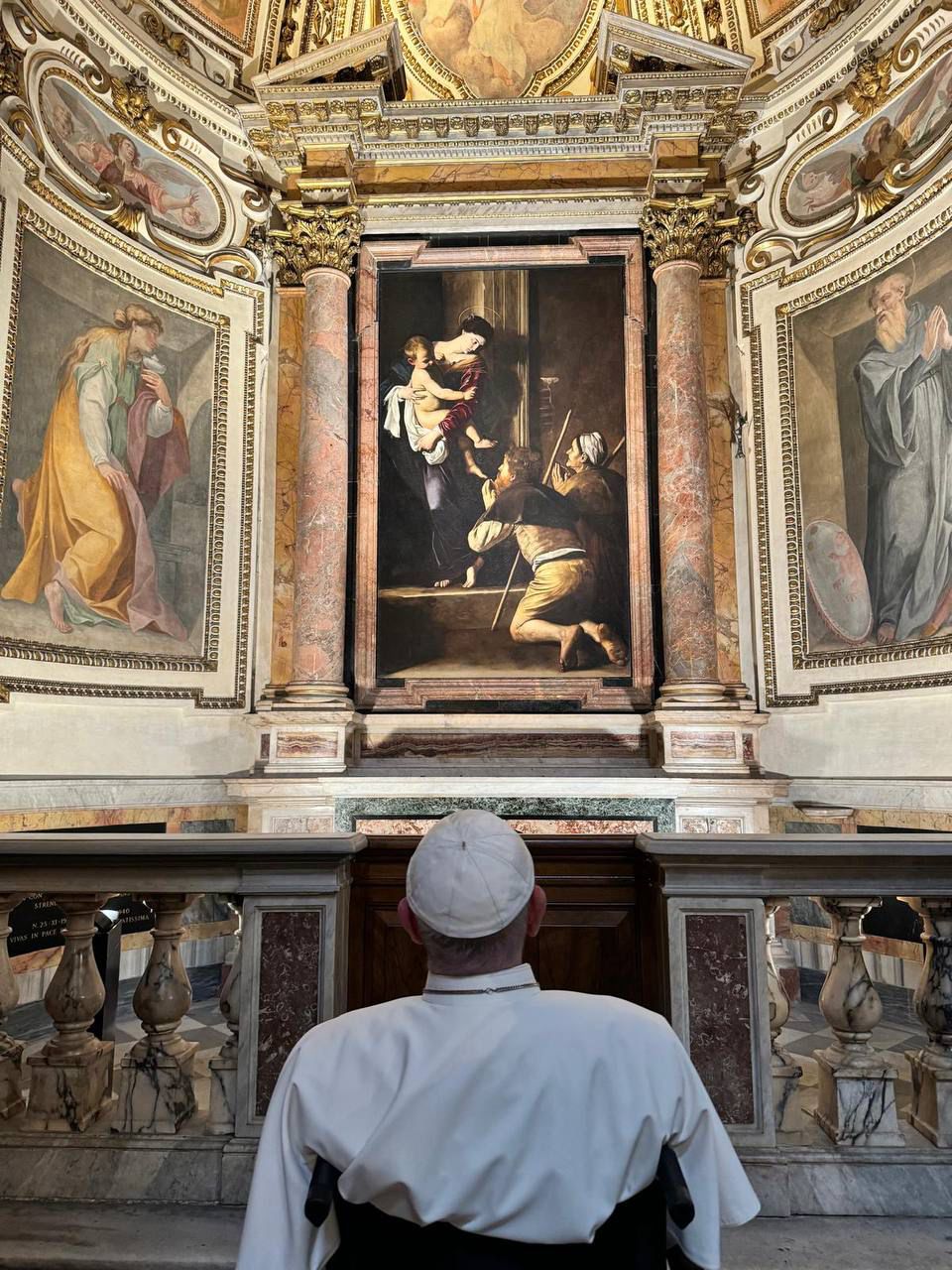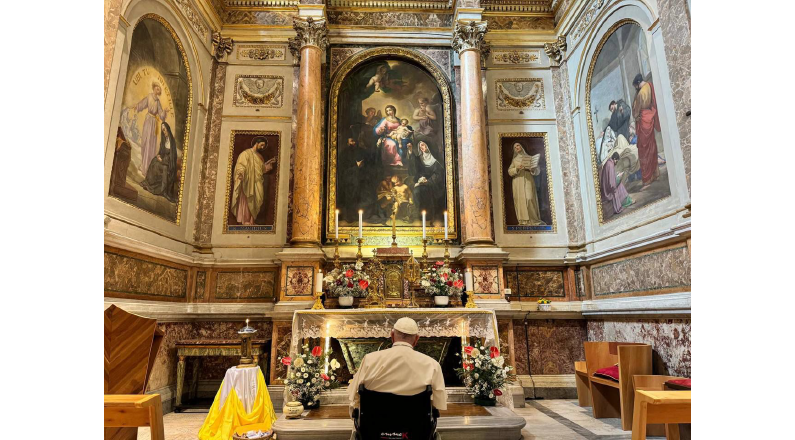(ZENIT News / Rome, 08.26.2024).- On the afternoon of Tuesday, August 27, on the feast day of Saint Monica, Pope Francis made a quiet visit to the Basilica of Saint Augustine in central Rome. His visit, marked by a moment of personal prayer, was centered around the chapel that houses the relics of Saint Monica, the mother of Saint Augustine. Following his prayer, the Pope also paused before the revered image of Our Lady of the Pilgrims, a significant Marian icon within the basilica.
After his time in prayer, Pope Francis greeted the friars, nuns, and pilgrims present before returning to the Vatican. This unassuming visit was rich in spiritual significance, reflecting the deep reverence that the Pope holds for Saint Monica, a figure celebrated for her enduring faith and perseverance, especially in the conversion of her son, Saint Augustine, one of the most influential Church Fathers.
The Basilica of Saint Augustine, located near the bustling Piazza Navona, is one of Rome’s significant religious landmarks. Constructed between 1479 and 1483, it stands as an early example of Renaissance architecture in the city. While the basilica is renowned for its impressive art and architecture, it is the tomb of Saint Monica that draws many of the faithful.

Saint Monica’s tomb is situated in a side chapel to the right of the main altar, a position that underscores her importance within the church. Though modest in its decoration compared to the other richly adorned parts of the basilica, this chapel is a focal point for pilgrims. The tomb has become a place of pilgrimage for those seeking her intercession, particularly in matters of family and conversion—an echo of her own life’s mission.
Saint Monica, who passed away in Ostia near Rome in 387 A.D., was initially buried there. However, her remains were moved to Rome in 1430, finding their final resting place in the Basilica of Saint Augustine. Devotees regard her as a symbol of unwavering patience, constant prayer, and hope, virtues that were instrumental in her son Augustine’s eventual conversion and rise to sainthood.
The simplicity of Saint Monica’s chapel belies the profound spiritual impact it has on those who visit. It is a space where the faithful come not for the grandeur of art but for the quiet power of prayer and reflection, seeking the strength and solace that Saint Monica epitomizes.
Thank you for reading our content. If you would like to receive ZENIT’s daily e-mail news, you can subscribe for free through this link.



